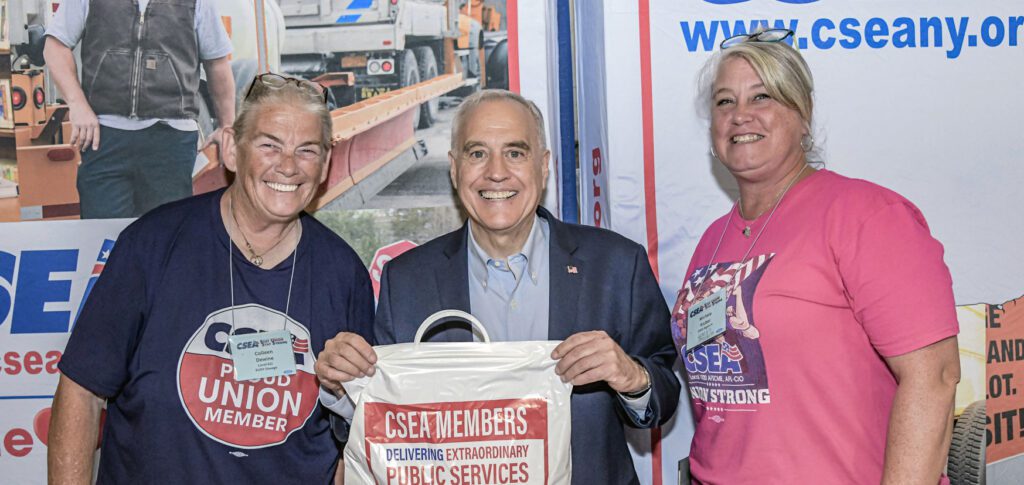
CSEA at the New York State Fair!

From left, CSEA SUNY Oswego Local Treasurer Colleen Dewine, State Comptroller Thomas DiNapoli and state Workers' Compensation Board Local President Michele Kiuber pose at our union's booth at the New York State Fair. (Photo/NYS Comptrollers Office)
